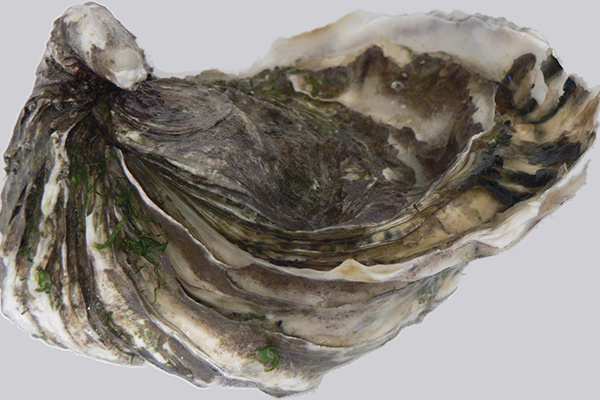Ocean Acidification Threatens Shellfish, Report Says
| Marco Foronda | | Feb 24, 2015 11:12 AM EST |
(Photo : wikipedia.org) The Pacific oyster Crassostrea gigas.
A new study claims that mollusk farming and fishing, a US$1 billion industry, is increasingly vulnerable to ocean acidification. The study is one of most comprehensive to quantify the long-term economic risks of an overly acidic ocean.
The findings are a result of the first-ever nationwide vulnerability analysis that looked at the long-term risks associated with ocean acidification. Coastal communities across 15 states depend of the revenue from this threatened industry, and the newly-identified risks extends from Maine to the bayous of Louisiana.
Like Us on Facebook
"Ocean acidification has already cost the oyster industry in the Pacific Northwest nearly $110 million and jeopardized about 3,200 jobs," said Julie Ekstrom, lead author on the study while with the Natural Resources Defense Council.
Ocean acidification is the product of growing levels of carbon dioxide in the atmosphere. More than a third of CO2 released into the air is absorbed by the oceans, lakes and rivers. The rising levels of CO2 in the ocean are exacerbated by rising water temperatures and pollution.
The effects on marine biology are most notable among mollusk populations, especially oysters and clams being raised and harvested by fish farmers.
The study identified a number of "hot zones" that are predicted to take the biggest hit from the effects of ocean acidification. These regions include the Pacific Northwest, Bew England, the Mid-Atlantic, and areas off the Gulf of Mexico.
Many of the most economically-dependent regions, including Massachusetts, New Jersey, Virginia and Louisiana, are believed to be least prepared to adapt to the changes due to lack of research and ocean acidification monitoring.
Scientists at Oregon State have been researching ways to help damaged mollusk populations rebound, and have been working to bolster alternative fishing industries, so as to insulate local communities from steep losses.
The findings were funded through the National Science Foundation's National Socio-Environmental Synthesis Center, and were published today in the journal Nature Climate Change.
Tagsocean acidification, Ocean, acid, acidic ocean, shellfish, oyster, marine animals, marine creatures, CO2, carbon dioxide, clams
©2015 Chinatopix All rights reserved. Do not reproduce without permission
EDITOR'S PICKS
-

Did the Trump administration just announce plans for a trade war with ‘hostile’ China and Russia?
-

US Senate passes Taiwan travel bill slammed by China
-

As Yan Sihong’s family grieves, here are other Chinese students who went missing abroad. Some have never been found
-

Beijing blasts Western critics who ‘smear China’ with the term sharp power
-

China Envoy Seeks to Defuse Tensions With U.S. as a Trade War Brews
-

Singapore's Deputy PM Provides Bitcoin Vote of Confidence Amid China's Blanket Bans
-

China warns investors over risks in overseas virtual currency trading
-

Chinese government most trustworthy: survey
-

Kashima Antlers On Course For Back-To-Back Titles
MOST POPULAR
LATEST NEWS
Zhou Yongkang: China's Former Security Chief Sentenced to Life in Prison

China's former Chief of the Ministry of Public Security, Zhou Yongkang, has been given a life sentence after he was found guilty of abusing his office, bribery and deliberately ... Full Article
TRENDING STORY

China Pork Prices Expected to Stabilize As The Supplies Recover

Elephone P9000 Smartphone is now on Sale on Amazon India

There's a Big Chance Cliffhangers Won't Still Be Resolved When Grey's Anatomy Season 13 Returns

Supreme Court Ruled on Samsung vs Apple Dispute for Patent Infringement

Microsoft Surface Pro 5 Rumors and Release Date: What is the Latest?










